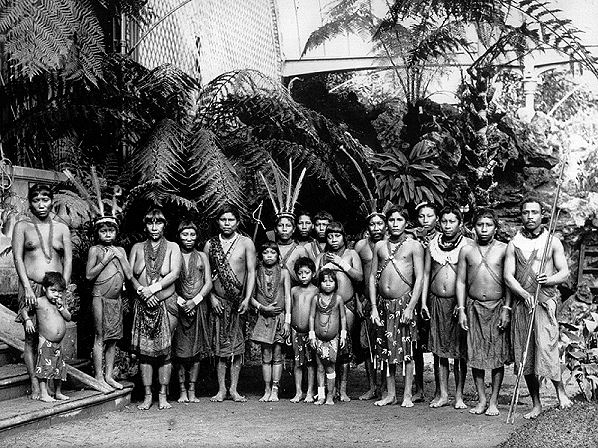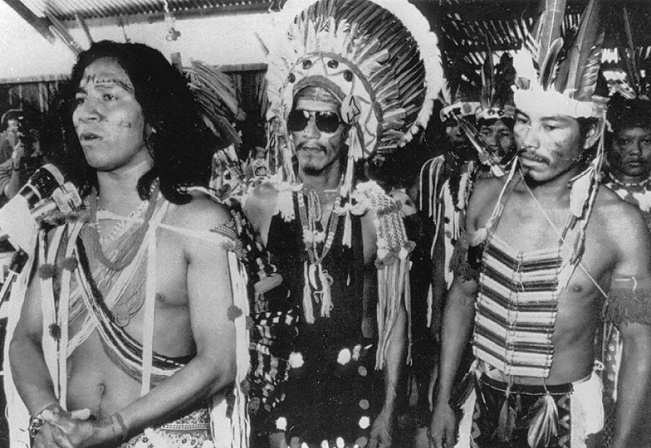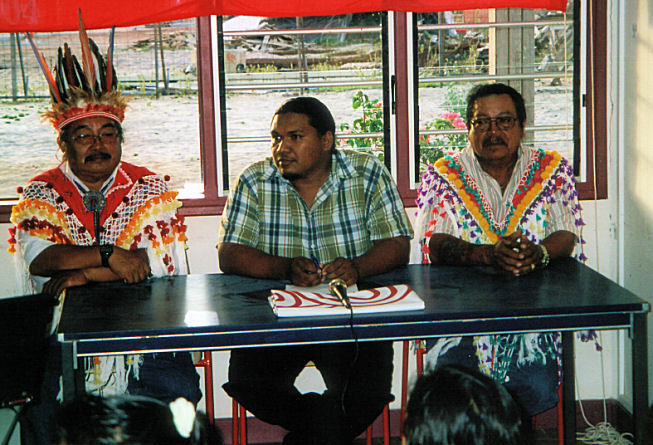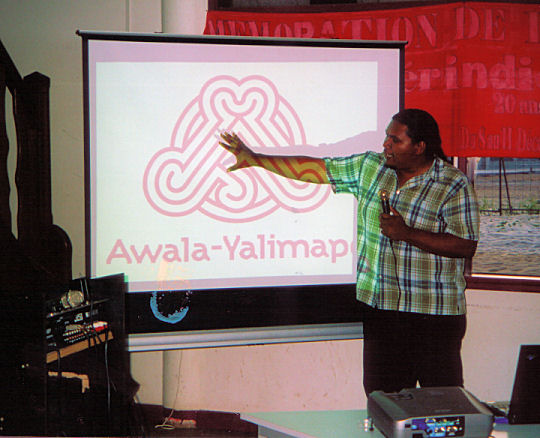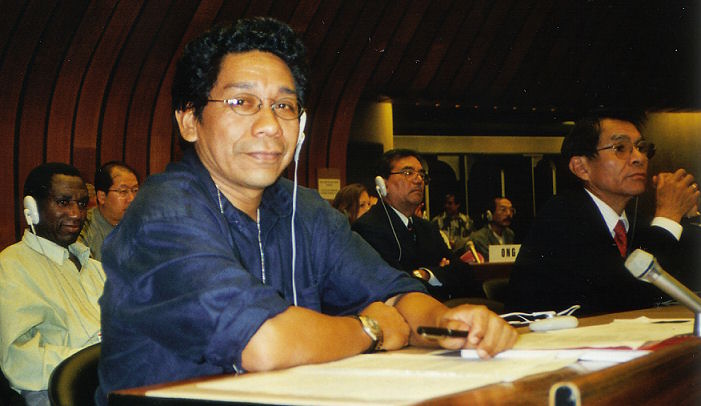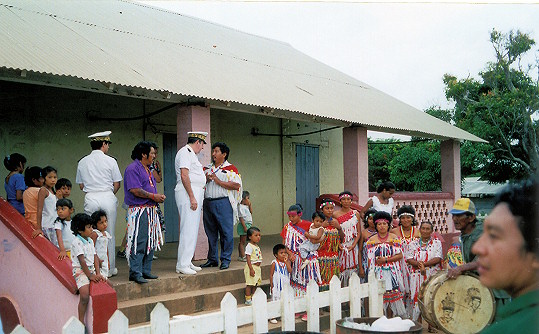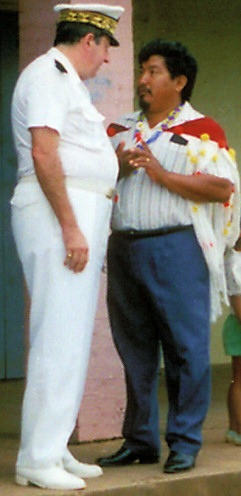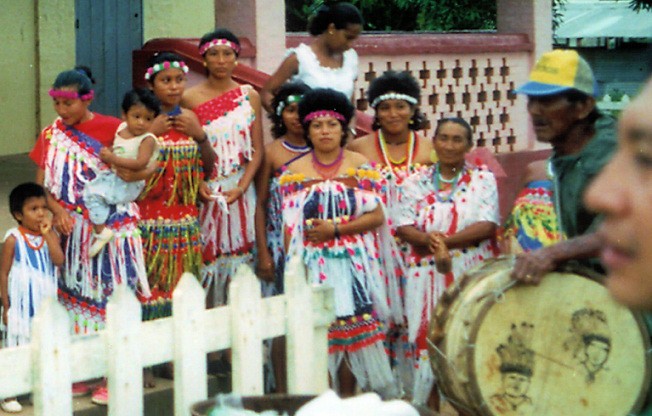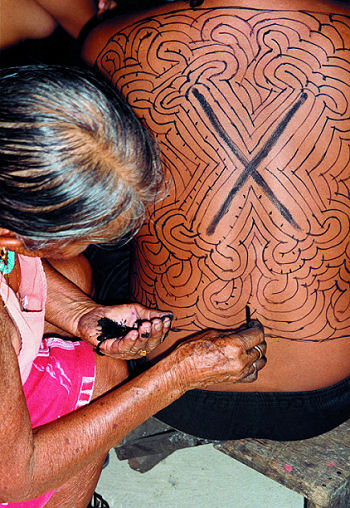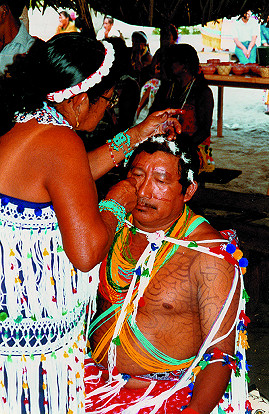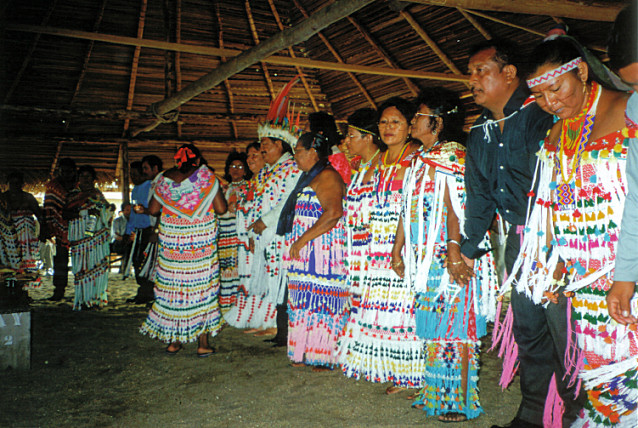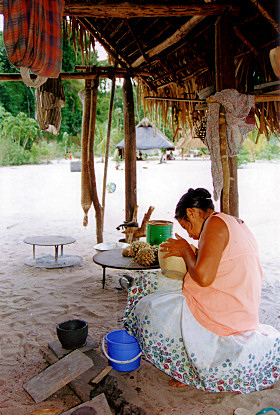











FRENCH
GUIANA
(GUYANE)
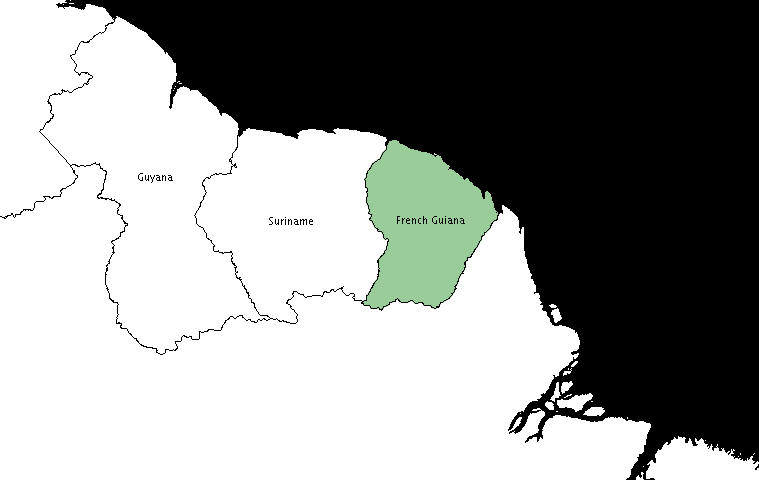
Indigenous Resurgence in the Contemporary Caribbean: Amerindian Survival and Revival. Edited by Maximilian C. Forte. Published by Peter Lang, New York, 2006
Contributor: Gérard Collomb obtained his doctorate in Anthropology from the Sorbonne in 1973. He is currently a researcher at the Centre National de la Recherche Scientifique (Laboratoire d’Anthropologie des Institutions). His present research deals with three main questions: the political organization of the Kali’na Amerindians in French Guiana and Suriname; the making of a collective identity; and Amerindian self-representation. Collomb has published in numerous French-language journals, including Journal de la Société des Américanistes, Recherches amérindiennes au Québec, Ethnologie Française, and Socio-Anthropologie. With Felix Tiouka, an Amerindian leader in French Guiana, he authored Na’na kali’na: une histoire des Amérindiens Kali’na en Guyane (Ibis Rouge Editions, 2000), and has published a chapter in the book Zoos Humains, Mémoire coloniale, edited by N. Bancel, P. Blanchard, G. Boëtsch, S. Lemaire and É. Deroo (Editions La Découverte, 2002). He is also an editor with the Caribbean Amerindian Centrelink (www.centrelink.org) and a member of the editorial board of Kacike: The Journal of Caribbean Amerindian History and Anthropology (www.kacike.org).
Chapter: Chapter Ten. Disputing Aboriginality: French Amerindians in European Guiana
Abstract:
The context of globalization has opened the way for a crisis in modern societies, leading to a questioning of the nation-state, and facing the rise of specific identity affirmations. This is all the more the case in France, were the state is based on patterns of nation and citizenship in which cultural assimilation processes prevail. The paper proposes to deal with these questions with reference to the Amerindian political movement in French Guyana, a so-called French departement d’outre-mer (i.e. an "overseas department"). The simultaneous emergence of this movement and the call for more local political autonomy of French Guyana has set up a complex situation multiplying for the Amerindians the question of identity to three levels: the French nation, a "Guyanese" nation to come, and the strong affirmation of a native identity. The Amerindian political movement in French Guyana originated in the 1980s among the Kali’na (Caribs) on the bases of a territorial claim as well as a call for the recognition of their culture and indigenous language. These claims were addressed to the French state, thus reproducing a long established relationship between France and the indigenous peoples during the colonial era. However in the last decade the Amerindians of Guyana (Arawak, Emerillons, Kali’na, Palikur, Wayana, Wayapi) have developed different political strategies in that they initiated a move unto the transnational stage developed by the indigenous political bodies from greater Amazonia (such as the Movement of Indigenous Organizations of the Amazon Basin, or COICA), as well as by working groups piloted by NGOs or by the United Nations’ offices at Geneva, where potential new international laws concerning the Indigenous people are being discussed. Through these processes, the Amerindians of French Guyana have succeeded in breaking their exclusive link with the state, established during the colonial era. This opening of the Indigenous Guyanese movement to the international community led them also to deeply reconfigure their discourses and arguments and to create new trans-boundary cooperation. And, above all, it has legitimized the notion of the ‘indigenous peoples’, hereafter central in the political discourse of peoples who, in the recent past, had to see themselves as mere ‘minorities’ belonging to a nation-state as a unitary whole. But their revindication of this specific status is in conflict with the ongoing definition of the common ‘imagined community’ (following Benedict Anderson), Guyana, seen by the Creole political elite as gathering all ethnic groups in a multi-cultural country, which some day could become important to support tomorrow’s autonomy or independence.
Websites on the Amerindians of French Guiana:
The Indigenous Peoples of French Guiana: Caribbean Amerindian CentrelinkPhoto Gallery by Gerard Collomb
In 1882 and 1892, some native families from French Guiana and Suriname were brought to Paris, to be shown as specimens of "savage humanity"
The “Rassemblement des Amerindiens de Guyane Française” (Assembly of Amerindians of French Guiana), organized by the AAGF in 1984 in the village of Awala, outlined the political framework that Amerindians would seek to develop during the following years. On the last day, the event acquired a different character when the young President of the AAGF, Felix Tiouka, made a speech in which he launched a vigorous criticism of French policy with respect to the Amerindian communities, asking for more rights and recognition: “We want to obtain the recognition of our indigenous rights, i.e. the recognition of our territorial rights, our right to remain Amerindian, and to develop our own institutions and our culture;” this speech created something resembling a scandal and caused the immediate departure of the representative of the state.
In 1989, the two villages Awala and Yalimapo were transformed into a French Administrative Division–a "commune."
In 2005, the young Kali’na mayor decided to get an "ethnic" flag for the community, which he presented to the population with the authority of the traditionnal chiefs
Alexis Tiouka, coordinator of the FOAG (Federation of French Guianese Amerindian Organizations), attending a United Nations (Geneva) meeting of the Working Group on Indigenous Peoples.
A "political summit" between natives and the State: the two local iopoto–chiefs-welcoming the "Prefet" in an official visit to the field, in Awala-Yalimapo (ca 1993).
Epekotono is the main occasion of social gathering for the Kali’nas: celebrating the end of a mourning period by a night of dancing and singing. It involves the whole family in order to prepare a great feast, devoted to definitively cut ties with the deceased. The mourners are maked up with body paintings.
Epekotono is the main occasion of social gathering for the Kali’nas: celebrating the end of a mourning period by a night of dancing and singing. It involves the whole family in order to prepare a great feast, devoted to definitively cut ties with the deceased. The mourners are maked up with body paintings.
Epekotono is the main occasion of social gathering for the Kali’nas: celebrating the end of a mourning period by a night of dancing and singing. It involves the whole family in order to prepare a great feast, devoted to definitively cut ties with the deceased. The mourners are maked up with body paintings.
Pottery making in Ayawante (ca 1995)
